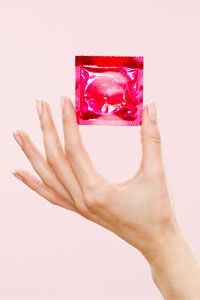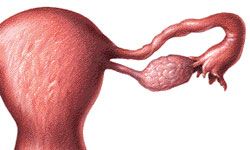A scientific argument for why women can't get pregnant during their periods might go something like this: Since menstruation involves flushing an unfertilized egg out of the uterus, it doubles as a foolproof contraceptive window. But just as a baby's arrival isn't as simple as a stork dropping off a special delivery, getting pregnant involves plenty of intricacies and uncertainties. In fact, the menstrual cycle's variability is a primary reason why having a period doesn't temporarily render women infertile.
The typical menstrual cycle lasts 28 days, split into the follicular and luteal phases. In a nutshell, the follicular phase consists of a healthy egg developing in the ovaries, while the luteal phase is the post-ovulation preparatory period for that egg to meet up with a sperm in the fallopian tubes. A more detailed daily breakdown of how all of that happens within a single cycle goes as follows:
Advertisement
- Days 1 -- 5: Menstruation commences as the lining of the uterus called the endometrium sheds and an unfertilized egg exits the uterus.
- Days 6 -- 10: Estrogen promotes the regrowth of endometrial cells in the uterus in preparation to receive an egg once again.
- Days 11 -- 18: Ovulation, the peak of female fertility, happens when a mature follicle releases an egg into the fallopian tubes.
- Days 19 -- 28: Hormone secretions prompt the uterine lining to continue thickening to create a nurturing environment for embryo implantation should fertilization occur.
If, in those final days, a sperm never reaches the released egg, the menstrual cycle begins anew. Otherwise, the wheels are set in motion for pregnancy, and the hormone secretions associated with the luteal phase continue for the following nine months [source: Freudenrich]. However, those menstrual markers aren't identical for every woman, so even though it might appear impossible to get pregnant while on your period, it's plausible for an expectant egg and an enterprising sperm to meet at any point during the month [source: Shih].
Advertisement



